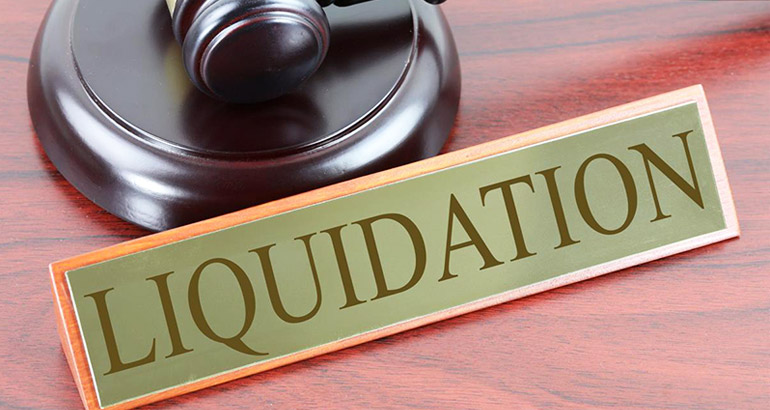The Facts About Company Liquidation Uncovered
The Facts About Company Liquidation Uncovered
Blog Article
The 9-Minute Rule for Company Liquidation
Table of ContentsThe Best Strategy To Use For Company LiquidationCompany Liquidation Things To Know Before You Get ThisNot known Facts About Company LiquidationThe 4-Minute Rule for Company LiquidationWhat Does Company Liquidation Do?
A liquidator is specifically selected to manage the winding up of a firm's events in order for it to be folded commonly when the business is going bankrupt. The liquidator is an impartial 3rd party that supervises the sale of firm properties in order to pay off any type of exceptional financial debts.Their function consists of, but is not restricted to: Impartial Movie director: A liquidator is entrusted with functioning as an unbiased 3rd party to oversee the whole company liquidation process. Produce Declaration of Affairs: Liquidators have to create a comprehensive declaration of events document. This paper is dispersed to creditors, detailing the existing monetary standing of the organization at the time of its liquidation.
After the liquidation of a company, its presence is erased from Firms House and it discontinues to be a legal entity. If directors browsed the process without concern, there would be no penalties or personal responsibility for solid financial obligations expected. Currently, with a fresh start, supervisors can discover new organization opportunities, though specialist assessment is recommended.
Company Liquidation - Questions
If more than 90% of all company investors agree, liquidation can take area on short notice within 7 days, the minimal statutory notice for lenders. However, generally, the bigger the liquidation and the more properties and funding the business has, the longer the process will certainly take. 'Do I need to pay to liquidate my firm?', the response will certainly depend upon whether or not your business has any kind of assets leftover when liquidating.

We recognize that no 2 firms are the very same, which is why we will make the effort to get to recognize your business so we can advise the best program of action for you. We just work in your ideal interests, so you can be totally positive in the service we provide.
Our Company Liquidation Ideas
In the UK, there is an established process to folding or reorganizing a website link restricted firm, whether it is solvent or insolvent. This procedure is called liquidation and can only be managed by a certified insolvency practitioner (IP) according to the Bankruptcy Act 1986. There are four major sorts of company liquidation procedure: Creditors' Voluntary Liquidation (CVL); Mandatory liquidation; Management; and Members' Volunteer Liquidation (MVL).

In these situations, it is essential that the business ceases trading; if business proceeds to trade, the directors can be held personally accountable and it could cause the insolvency expert reporting wrongful trading, called misfeasance, which may lead to lawful action. The directors designate an insolvency specialist and when this has actually been concurred and validated, there is a conference with the investors.
Naturally, if there are no shareholders, this action of the procedure is not needed (Company Liquidation). The IP takes control of the company and starts the firm liquidation process. The supervisors are no longer associated with what occurs, consisting of the sale of the business's properties. Nevertheless, if the directors want any of the properties, they can inform the IP.
About Company Liquidation
The major distinction is that the firm's financial institutions related to the court for a winding up order which requires the insolvent firm right into a liquidation process. In many cases, lenders take this action as a last hope since they haven't obtained repayment with other kinds of settlement. The court designates a bankruptcy professional, also called an official receiver, to perform the required business liquidation process.
This sort of business liquidation is not volunteer and directors' conduct is reported to the UK's Assistant of State once the liquidation process has been finished. For that reason, any director that fails to comply with the IP or has actually been associated with supervisor special info misconduct, or an illegal act, may cause serious consequences (Company Liquidation).
It is utilized as a way to shield the business from any lawful action by its financial institutions. The directors of the business agree to make regular repayments to settle their financial obligations over a period of time.
The Ultimate Guide To Company Liquidation
This provides the firm with time to create a plan moving forward to rescue the business and stay clear of liquidation. At this factor, directors hand control of the business over to the assigned administrator. If a firm is solvent yet the supervisors and shareholders intend to shut business, a Members Volunteer Liquidation is the right alternative.
The company liquidation process is taken care of by a liquidator appointed by the directors and shareholders of the company and they need to authorize an affirmation that there are no financial institutions remaining. The liquidation procedure for an MVL is comparable to that of a CVL because properties are understood yet the profits are dispersed to the supervisors and the read review shareholders of the company after the liquidator's costs have been paid.
Report this page